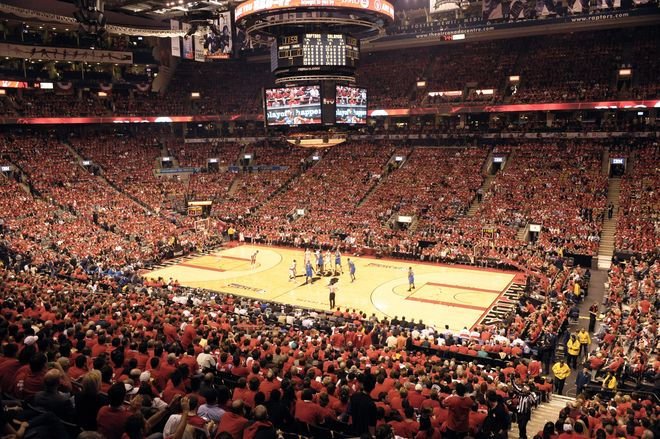The number of players on a standard basketball team is comprised of 12 players, although the roster can extend to a maximum of 15 players.
This roster flexibility allows teams to accommodate diverse player talents, strategies, and situational needs throughout the season.
During an actual game, the playing court sees active participation from 5 players per team, each fulfilling specific roles and positions. Simultaneously, on the sidelines, an additional contingent of around seven players is typically seated on the bench.
These bench players remain poised for substitution opportunities, contributing to strategic adjustments and maintaining optimal team performance.
This structure ensures a balance between on-court engagement and off-court support, emphasizing the importance of both active players and substitutes.
By comprehending the general composition of a basketball team, fans, and enthusiasts can better appreciate the strategic depth and teamwork integral to the sport.
Varying Team Sizes Across Levels
In basketball, rules and team sizes exhibit notable variations across different levels and leagues. A key aspect influencing these dynamics is the number of players allowed on a team.
Let’s swiftly navigate through the typical team sizes across diverse levels of play, spanning the NBA, college basketball, varsity, and junior varsity teams, along with the domain of high school basketball.
Number Of Players In Different Leagues:
NBA Teams
In the professional basketball realm, teams are permitted to have a maximum of 15 players on the bench during games and can contract up to 17 players. The roster limits are extended to 20 during the offseason.
Notably, NBA teams frequently maintain G League affiliates, and certain players operate under “two-way” contracts, enabling them to play for both the NBA team and the G League affiliate as required. Typically, two players on the team hold these versatile dual contracts.
WNBA Teams
The WNBA comprises 12 teams, and each team is permitted to have a roster of 12 players. This corresponds with FIBA rules, where each team is also comprised of 12 players.
College Basketball (D1, D2, D3)
The number of players in college basketball varies across divisions. D1 college basketball teams generally have around 12 to 13 scholarships available.
D2 teams typically have a maximum roster size of 15 players, while D3 teams, without athletic scholarships, may vary in roster size.
High School Varsity/Junior Varsity
In general, varsity teams usually comprise around 10–12 players, and junior varsity (JV) teams maintain a similar number, resulting in a combined team size of approximately 20 players. It’s essential to note that these figures can fluctuate depending on the specific school and state regulations.
Travel Basketball (AAU Basketball Team)
Circuit teams, frequently backed by shoe brands, typically field rosters of 8–12 players. In contrast, most other teams usually maintain rosters with around 8–10 players.
The Typical Team Setup
A typical basketball team is typically led by one head coach, although the number of assistant coaches can vary. The starting lineup typically consists of five players, filling essential positions such as point guard, shooting guard, small forward, power forward, and center.
In addition to the starters, there are usually around 7 bench players. This larger roster allows for strategic player rotations to manage fatigue, address situations where players might be in “foul trouble,” and have reserve players who can contribute to securing a victory.
Regarding assistant coaches, regulations stipulate that in college and the NBA, teams are allowed to have three assistant coaches, although some teams may have more. However, only this specific number is officially permitted on the floor to assist.
The Role Of Bench Players
Bench players, often relegated to the sidelines, play a pivotal and often overlooked role in the success of a basketball team. Their contribution goes beyond what meets the eye, as they actively engage in supporting the starters both on and off the court.
The bench provides a breeding ground for healthy competition, pushing the starting lineup to constantly improve and excel.
In the absence of a competitive edge for playing time, the starters might find it challenging to evolve and reach their full potential.
While bench players may not enjoy the luxury of consistent minutes on the court, their readiness and preparedness are essential aspects of their role.
The unpredictability of a basketball game, marked by injuries, foul trouble, and ejections, underscores the significance of a strong and well-prepared bench.
It is during these unexpected situations that bench players must swiftly transition from the sidelines to active participants, seizing the opportunity to make meaningful contributions to their team’s victory.
This flexibility and adaptability showcase the true value of bench players in the dynamic and unpredictable world of basketball.

